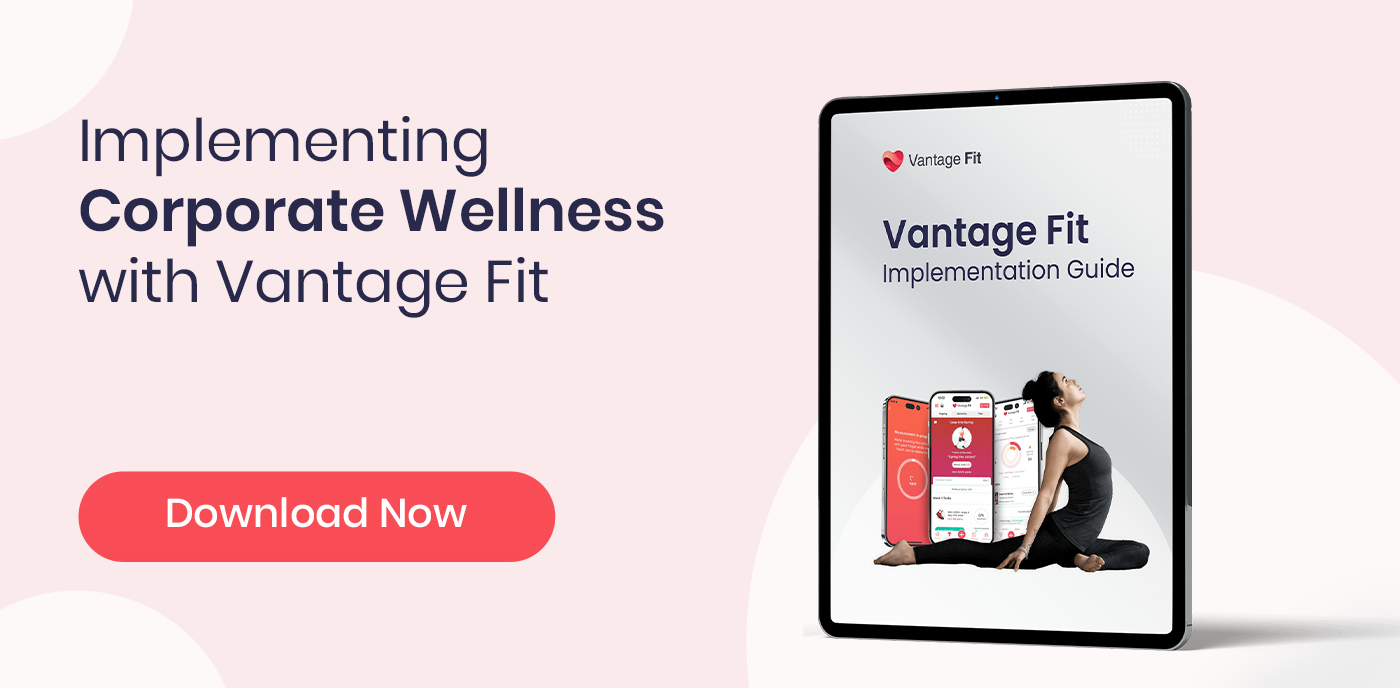Workplace Wellness Assessment: How to conduct, Tools & Frameworks
In today’s workplace, employee wellbeing has become a top priority, and the shift is clear.
Recent studies indicate that 61 percent of job seekers now consider personal wellbeing a key factor in deciding which job to accept.
To meet this expectation, nearly 58% of companies offer wellness programs as part of their benefits packages. But here is the question. Are these programs actually making a difference?
Launching a wellness initiative is relatively easy. You might introduce a fitness challenge, share a few mental health resources, or run a stress management webinar. These efforts may seem successful at first glance.
But how do you know they are truly working? Are they enhancing employee health, mitigating burnout, or fostering a positive culture?
This is where a workplace wellness assessment comes in.
A wellness assessment gives you more than just numbers on a spreadsheet. It helps you look deeper into your program. You learn what works, what doesn’t, and where there is room to grow. It provides insight into how your team feels, how supported they are, and what they truly need from your wellness strategy.
In this blog, we will explore how to conduct a workplace wellness assessment. You will learn how to define your goals, select the right metrics, gather the necessary data, and turn it into actionable steps.
This is not just about creating a report. It is about building a wellness program that is backed by insight, shaped by feedback, and designed for impact.
Let us begin by understanding what a workplace wellness assessment really is.
What is a Workplace Wellness Assessment?

A workplace wellness assessment is a structured process that helps evaluate how well an organization supports the health and wellbeing of its employees. It involves collecting and analyzing data on physical health, mental wellbeing, job satisfaction, and access to wellness programs.
The purpose is to get a clear view of what your employees need and how your wellness efforts are performing. It highlights strengths, uncovers gaps, and guides decisions to make wellness programs more effective.
These assessments are often conducted before launching a new wellness program. Doing this early helps build a strategy that is based on real needs rather than assumptions. Many companies also choose to assess wellness annually. Others do it after significant changes, such as shifting to remote work or noticing signs of burnout or low morale.
A well-timed assessment keeps your strategy grounded and responsive. It ensures your programs stay relevant and continue to support your employees as needs evolve. The benefits of a wellness assessment are both practical and strategic. It provides data that supports decision-making, goal-setting, and progress measurement.
It also builds trust among employees when they see their feedback being used to shape programs. Over time, this leads to better participation and stronger results.
Most importantly, it helps you connect wellness efforts to outcomes like reduced absenteeism, higher engagement, and even lower healthcare costs.
Achieving that kind of impact is challenging without first understanding what to measure. But a wellness assessment is not just a quick survey or a basic feedback form. It is not a check-the-box activity or something you do once and forget.
A good assessment looks beyond individual health to examine culture, leadership support, and policy alignment. It helps you see the whole picture, not just surface-level trends.
This is why a wellness assessment should be the starting point of every wellness strategy. Without it, programs often fall short or fail to deliver results. With it, you can build a program that is aligned, measurable, and designed to grow with your people. It becomes the foundation for long-term success in wellness.
How to Conduct a Workplace Wellness Assessment
Conducting a workplace wellness assessment is a straightforward process. But it does need a clear structure and planning. The goal is to collect meaningful data, analyze it accurately, and use the results to develop a wellness program that genuinely supports your people.
Here is a step-by-step guide to help you get started.
1. Start with Clear Goals and Stakeholder Involvement
Begin by defining what you want to learn from the assessment. Do you want to reduce stress? Improve engagement? Understand why participation is low?
Once the goal is clear, involve your key stakeholders. These can be HR leaders, team managers, wellness coordinators, or employee representatives. Their support will help you build trust and make the process easier to manage.
When everyone is on the same page, you can move forward with purpose.
2. Select the Metrics You Want to Measure

Choosing the right metrics is essential. These will shape your entire assessment process.
You can focus on areas like employee satisfaction with wellness benefits, participation in programs, awareness of available resources, and perceived support from leadership. Other useful metrics include stress levels, work-life balance, and overall indicators of mental and physical health.
Also, think about who you are measuring. Consider diversity across departments, job roles, and work locations. Different teams may have different experiences.
The more precise you are about what you want to measure, the more relevant your data will be.
3. Collect Data Using Multiple Methods
To get an accurate picture, you need a mix of data sources. Start with a well-designed anonymous survey. Please keep it simple but meaningful. Ask questions that reveal how employees feel about the wellness environment and the support they receive.
Then go deeper. Use focus groups, one-on-one interviews, or pulse surveys to add context to the numbers. You can also review existing HR data, including absenteeism, attrition, benefit usage, and performance trends.
The more ways you collect information, the more complete your insights will be.
Also Read: Employee Wellness Survey: Questionnaire Template
4. Analyze the Data and Identify Priority Areas

Once you have the data, take the time to review it carefully. Look for patterns, trends, and gaps.
Are some departments more stressed than others? Do employees know about the wellness resources you offer? Is there a difference in satisfaction between remote and in-office employees?
Sort the findings into themes. This helps you focus on the most urgent areas. Also, take note of what is working well. You will want to continue building on your strengths.
This step helps you turn your raw data into a clear direction.
5. Develop an Action Plan and Set Targets

Now it is time to turn insights into action. Based on what you found, outline a plan with specific wellness goals.
For example, you should increase program participation, offer more mental health support, or improve communication about available benefits. Whatever your goals, keep them focused and realistic.
Assign responsibilities—set timelines. Most importantly, define how success will be measured. This could include improved survey scores, reduced absenteeism, or higher engagement in wellness challenges.
A good action plan is specific and achievable.
6. Implement the Plan and Adjust as Needed
Put your plan into action. Share the updates with employees so they understand the changes are based on their feedback. This increases trust and participation.
Keep the experience smooth. Avoid making things too complicated or overwhelming. Focus on small steps that employees can easily engage with.
Monitor progress as you go. If something does not work as expected, adjust the approach. Flexibility is key to long-term success.
7. Evaluate Progress and Repeat the Cycle

A wellness assessment is not a one-time task. It should be part of an ongoing cycle.
Set a schedule to repeat the process at least once a year. Use the same survey tools and questions if possible. This allows you to track trends over time.
Measure key results such as participation rates, satisfaction scores, and wellness outcomes. Share these updates with your teams and leadership.
If things have improved, celebrate the progress. If not, revisit your approach and keep refining it.
Over time, this continuous cycle of assessment, planning, action, and review will help you build a strong and adaptable wellness strategy that meets the real needs of your workforce.
Let's look at some of the popular tools and frameworks for conducting a wellness assessment in your workplace.
Popular Frameworks and Tools for Wellness Assessment
Wellness assessment frameworks and tools help organizations evaluate the health needs of employees and the effectiveness of workplace wellness efforts. They provide structured ways to gather data, identify gaps, and plan improvements for employee wellbeing programs.
There are several wellness assessment tools available, each with its own strengths. The right tool depends on your organization’s goals, the level of detail required, and the depth of evaluation you need. Some tools are better for large organizations with complex needs. In contrast, others work well for mid-sized or growing companies looking to get started.
Here is a comparison of some of the most widely used frameworks and tools.
| Tool | What It Measures | Best For | Unique Value |
|---|---|---|---|
| CDC Worksite Health ScoreCard | Organizational health policies and practices across 18 strategy areas | Employers looking for a structured, government-backed model | Free, evidence-based, with downloadable templates and scoring system |
| HERO Scorecard | Strategic alignment of wellness programs with business outcomes | Employers focused on ROI and long-term wellness strategy | Used by Fortune 500 companies, includes benchmarking and outcome tracking |
| WELCOA Checklist | Culture of health, leadership support, program design, engagement | Organizations building a wellness culture from the ground up | Simple self-assessment with a focus on leadership and cultural alignment |
| NIRSA Health and Wellbeing Assessment | Comprehensive wellness environment for academic and large institutional settings | Colleges, universities, and public institutions | Includes environmental and policy-level measures |
| WellSteps Health Risk Assessment (HRA) | Individual health risks including nutrition, activity, mental health | Employers integrating wellness with clinical data | Customizable, integrates biometric screenings and reports |
| Georgia Worksite Health Promotion Capacity Tool | Program capacity, staffing, resources, planning and evaluation | Small to mid-sized organizations | Assesses readiness to implement wellness programs |
| CC Employee Wellness Audit | Current state of wellness initiatives and implementation gaps | Companies needing a quick internal check | Simple checklist to identify missing components |
These tools are not one-size-fits-all. Some focus more on the organization, others on the individual. A few combine both.
Choose a tool that matches your program’s maturity level, available resources, and goals. If you are just starting out, tools like the CDC Scorecard or the WELCOA Checklist can give you a solid baseline. For more advanced programs, the HERO Scorecard or a custom Health Risk Assessment may offer deeper insights.
Final Thoughts
A workplace wellness assessment is not just a planning tool; it is a long-term investment that provides foundational insights, aligning wellness efforts with your organization’s broader goals for sustained employee engagement and organizational success.
When done right, it gives you more than just feedback. It offers direction, focus, and clarity. It helps you understand what your employees need, where your current efforts stand, and how you can build something better.
However, the real value of a wellness assessment lies in what you do after the results are in. The goal is not to collect data. The goal is to take action. To build programs that reflect your workforce’s actual needs. To improve participation, outcomes, and engagement. And to show employees that their wellbeing matters at every level of the organization.
Over time, as you repeat this process, you will begin to notice patterns. You will track progress. You will catch problems early. And you will build a wellness culture that is resilient, employee-centric, and grounded in data.
Whether you are just getting started or trying to take your program to the next level, a wellness assessment is the foundation you need. It keeps your efforts aligned, strategic, and accountable.
And most importantly, it ensures that your wellness program is not just a list of items to check. It becomes a core part of how your organization supports its people.
If you are ready to turn your wellness insights into meaningful action, explore how platforms like Vantage Fit can support your goals. From engagement to analytics, it helps you take your next step with confidence.
FAQs
1) What are the nine dimensions of wellness assessment?
The nine dimensions typically include physical, emotional, social, intellectual, financial, occupational, environmental, spiritual, and cultural wellness. These help assess the full scope of employee wellbeing.
2) Why is conducting a workplace wellness assessment critical?
It helps you understand employee needs, measure program effectiveness, and build targeted wellness strategies based on real data.
3) How often should wellness assessments be conducted?
At least once a year. You can also do smaller pulse surveys every six months or after significant organizational changes.
4) Can wellness assessments be done without an existing wellness program?
Yes. In fact, it is ideal to start with an assessment before launching any wellness initiative. It helps build your program on actual employee needs.


